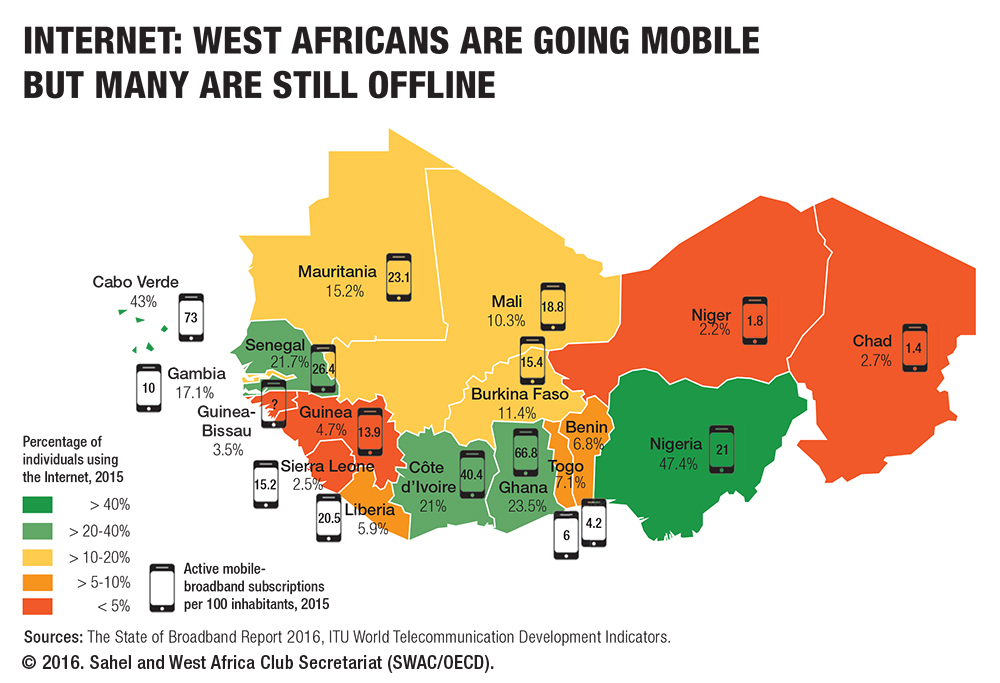Title:
Internet: West Africans are going mobile but many are still offline
Topics:
Country:
SWAC:
Post date:
22/09/2016
Image:

Connectivity has increased rapidly over the past years and demand for faster data networks is high worldwide. With a few exceptions (Guinea-Bissau, Mali, Mauritania and Senegal), almost all countries in West Africa have developed a national broadband plan or ICT strategy and many countries are now connected with fiber optic cables to Europe. Despite the huge progress, Africa remains the least-connected continent. Africa’s broadband household penetration accounted for 15.4% in 2015, far behind the worldwide average of 52.3% (Asia and the Pacific - 46.4%; the Americas - 64.4%; and Europe - 84%). When it comes to individual Internet usage, Nigeria was the best-performing West African country in 2015, with almost one out of two Nigerians connected. However, due its large population, Nigeria is also among the top six countries in the world with the largest offline populations (after India, China, Indonesia, Bangladesh and Pakistan). The world’s most popular way of access the Internet is through the use of mobile devices (smartphones, tablets and other mobile devices). The digital divide in that sector remains large: mobile penetration in the developed world is 81% versus 46% in the developing world. The number of unique mobile phone subscribers in Africa reached half a billion in 2015, out of which some 25% had access to a mobile broadband (3G/4G) connection; this percentage is rapidly growing thanks to network rollouts and the increasing availability of affordable mobile broadband devices and tariffs. Cabo Verde and Ghana already have more mobile broadband subscribers per 100 inhabitants than Belgium or Canada.













